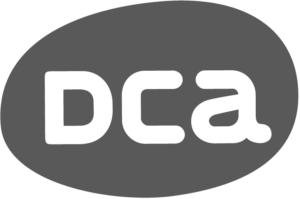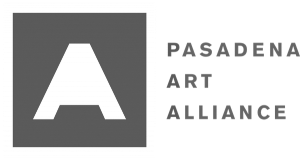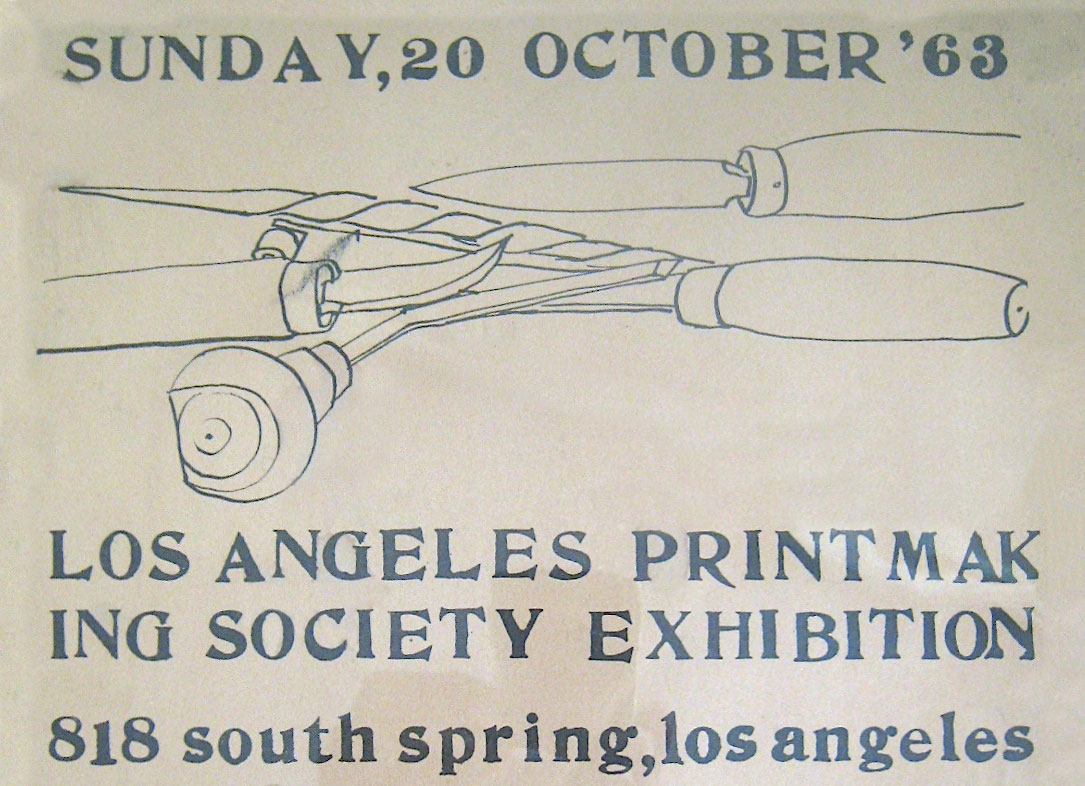
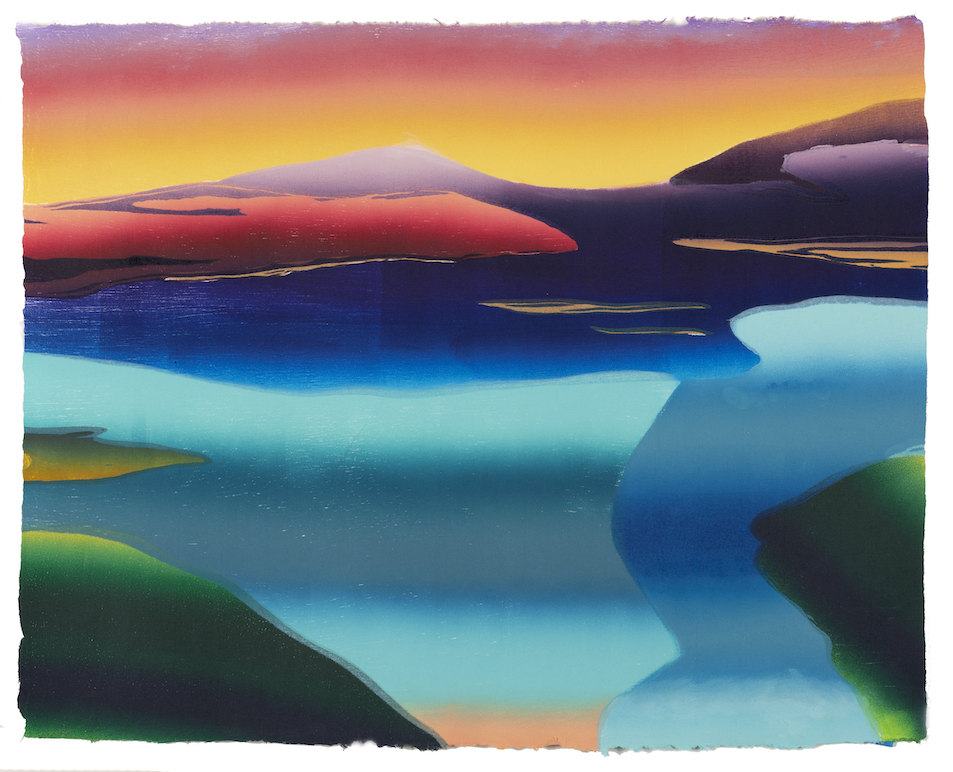
The 38th Bradley International Print and Drawing Exhibition is the second-longest-running juried print and drawing competition in the United States. The two-month exhibition (February 3 — March 31, 2023) venue introduced the community to some of the most relevant and cutting edge works by contemporary printmakers throughout the world.
It was established following WWII when veterans returned from Europe and the economy improved. Ernest Freed at Bradley University, Peoria IL, realized that printmaking was the perfect opportunity for middle-class families to afford original works of art. Many of the military personnel were exposed to fine art and prints in Europe, and families had expendable income. Affordability and quality artwork allowed everyone in Central IL to participate in appreciating original works of art. The early Bradley National exhibitions featured masters of printmaking, e.g., Leonard Baskin and Mauricio Lasansky; it soon became noted as the best in contemporary printmaking and drawing throughout the United States.
Every two years this exhibition features contemporary graphic artwork and drawings from around the globe. Traditional and non-traditional disciplines, including printmaking, drawing, book arts, and experimental techniques were represented in the show. This year’s Bradley International features 134 works by 109 national and international artists. It was held at four Peoria exhibition spaces, including on campus at Bradley University at Heuser Art Center Gallery and Hartmann Center Gallery, the Peoria Art Guild, and the Peoria Riverfront Museum.
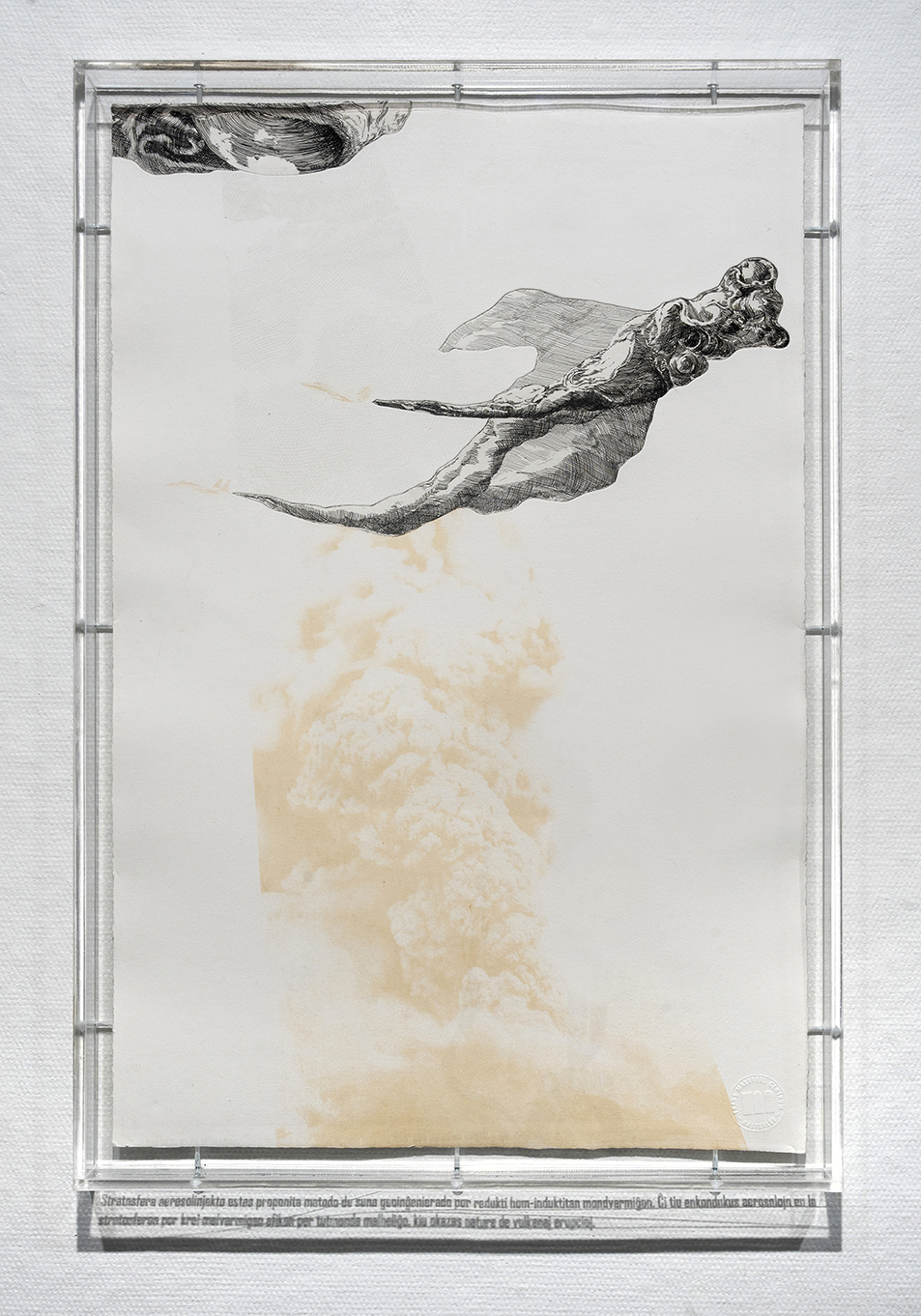
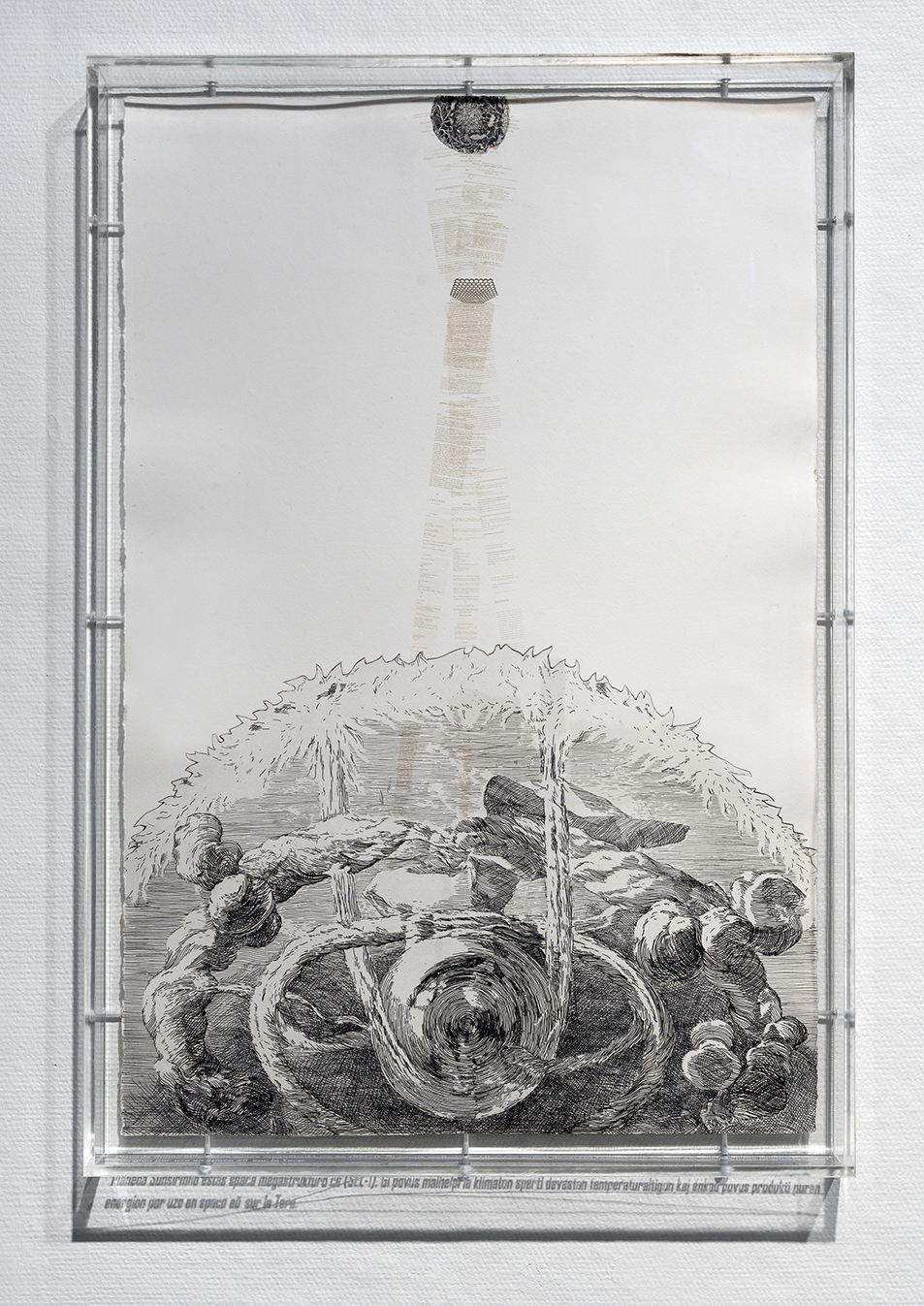
This exhibition took us through mainstream printmaking to a place where it piques our curiosity and gives us a bolder approach to appreciating contemporary printmaking. The Los Angeles Print Society was well represented in this year’s Biennial and members included were David Avery, Peter Baczek, Cathie Crawford, Yuji Hiratsuka, Colin Lyons, Endi Poskovic, Nic Tisdale, and Linda Whitney.
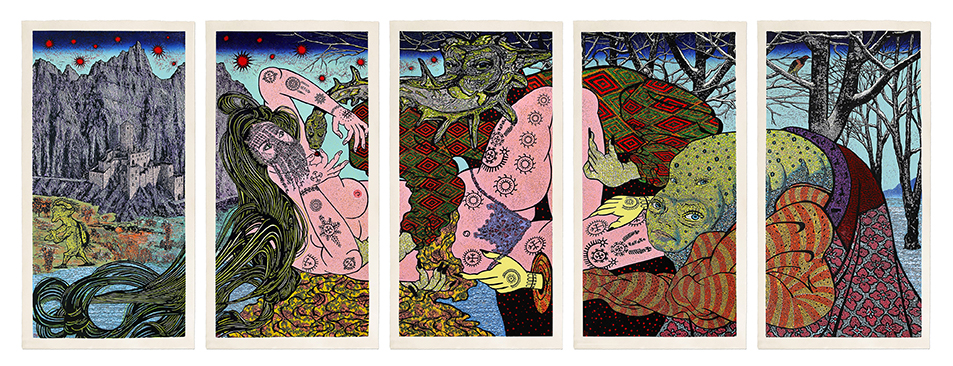

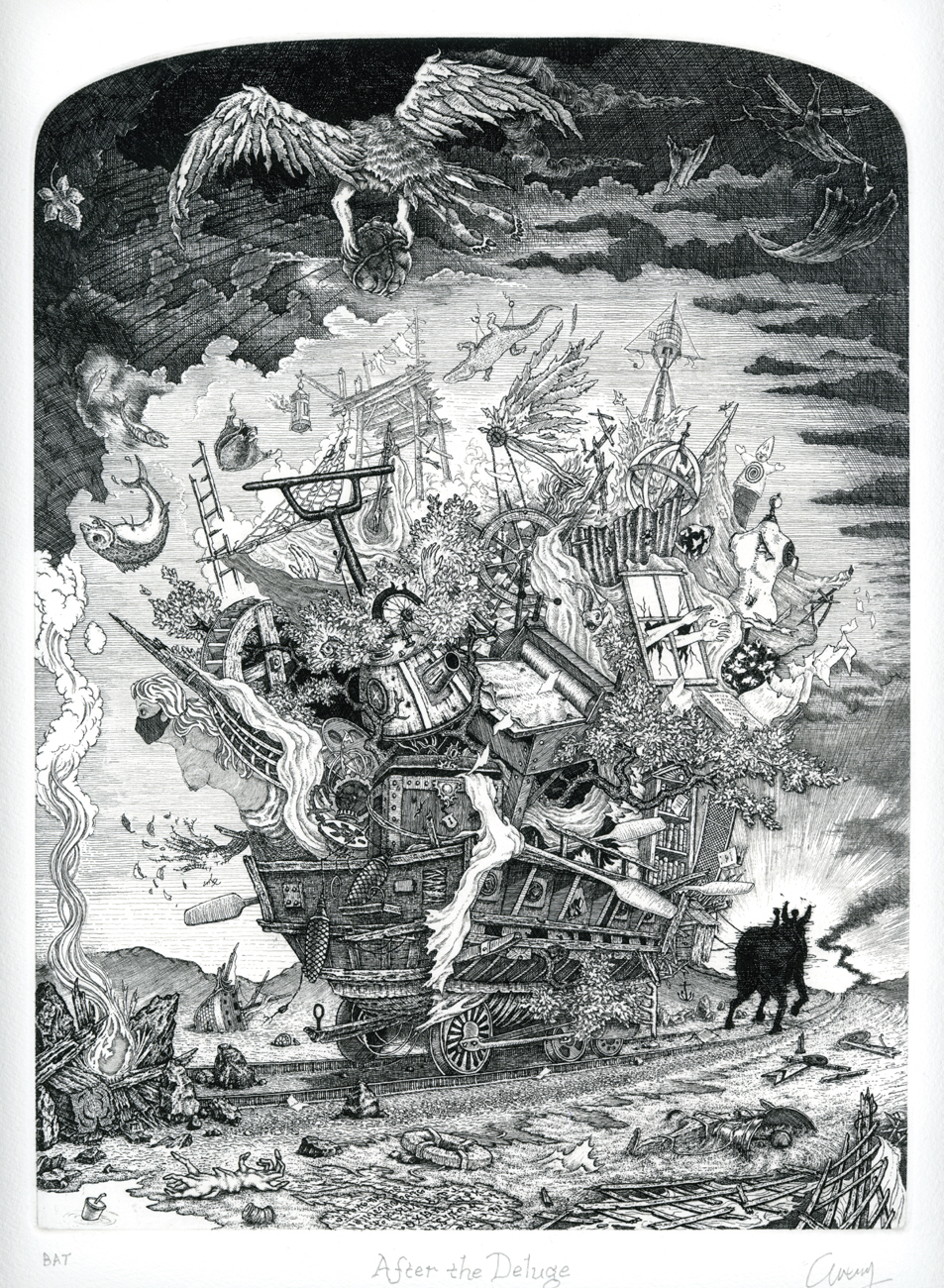
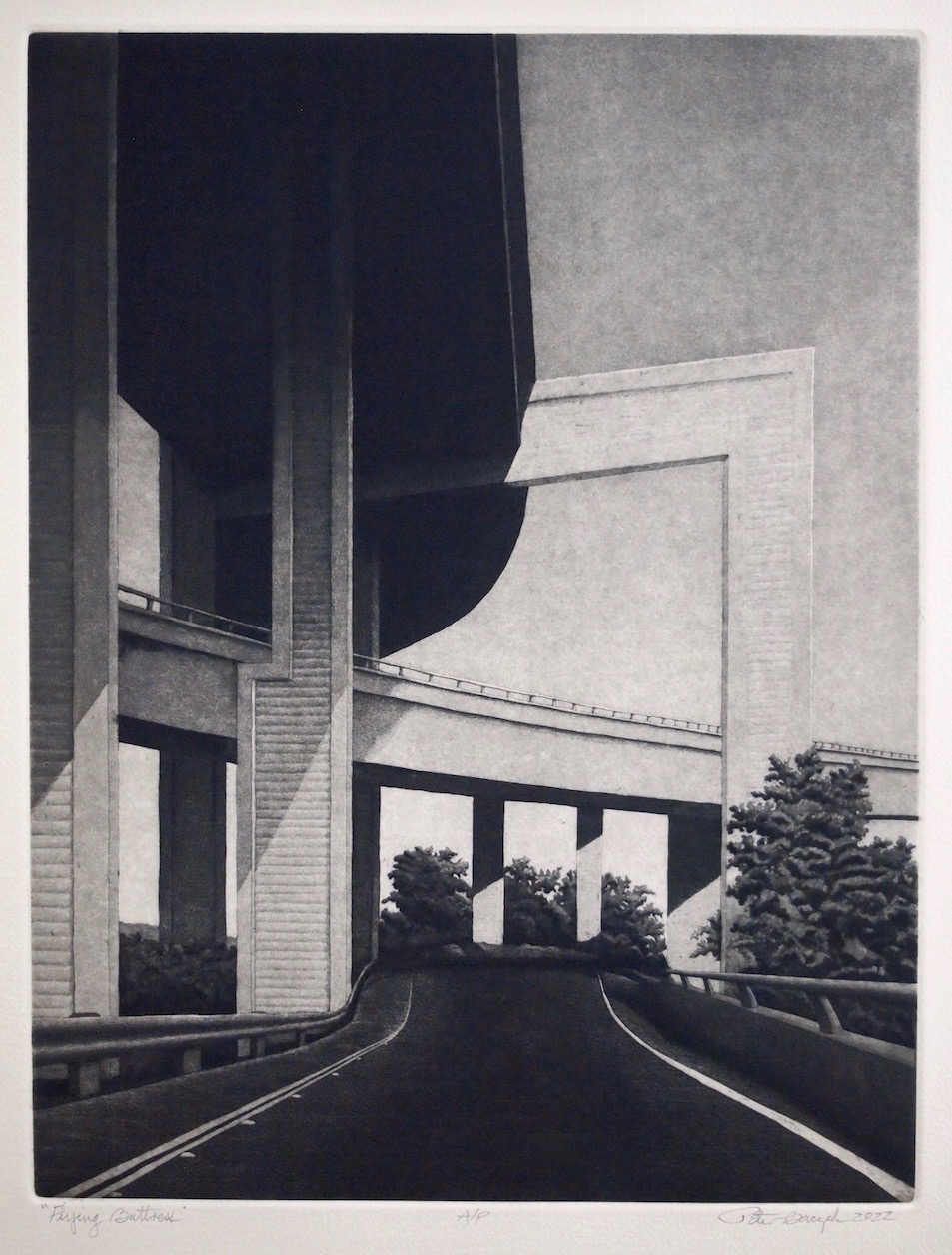
The 38th Bradley International Print and Drawing Exhibition was juried by Tyanna Buie. Currently Buie is an Assistant Professor/Section Chair of Printmaking at the College for Creative Studies in Detroit, MI.
Printmaking is an artistic process based on the principle of transferring images from a matrix onto another surface, most often paper or fabric. Traditional printmaking techniques include relief (woodcut or linocut,) etching, engraving, and lithography.
Initially, Bradley National exhibited prints that were straightforward and adhered to expectations of mastering the technique and producing a well-rendered image. Now in Contemporary printmaking, artists have experimented by broadening their tools and methods of expressing themselves. This has come to include screen printing and other commercial graphic processes in addition to integrating technical media processes in their arsenal to produce multiples. A couple of examples influencing this expansion are British artist David Hockney who has included faxing artworks and drawing on his iPad, and Illinois artist Nicholas Africano use of Xerox machines to print his multiples.

The 38th Bradley International had ingenious artists mixing methods and messages to create works that command our attention as viewers, and they allowed us to explore surfaces that delight the eye. The public found monumental works that proved that the most formal print and drawing techniques can confront and intimidate the audience. Once prints and drawings were seen as an intimate and familiar time for appreciation, now they present with a scale that can overwhelm the gallery. Endi Poskovic’s Primavera: Hagar and the Angels in the Wilderness had a great presence at Heuser Art Center. He incorporates across five panels, an emotional work demonstrating his ability to combine color, form, and visual choreography within a narrative framework. Also hanging in this gallery are prints by Yuji Hitasuka. His self-disclosure of creating complex relationships with the matrix, the process, and the viewer, draws one to consider the texture, the rich colors, and the exaggeration of the figure in a human experience like no other. Melancholic Feast offers us that and so much more. Patrons needed to allow time to experience this installation at Heuser Gallery.
From his di-chot-o-my series, Nic Tisdale explores the visual communication process through digital mediums. His target format is reminiscent of artists Jasper Johns’ and Kenneth Noland’s work pulls the viewer in with concentric circles. Whereas Johns and Noland focused on color, Tisdale has a specific distortion of meaning through his use of social and contemporary images woven into his matrix. di-chot-o-my: Up/Down II is confined to a space that is energized with vertical texture and color but disrupted with dark concentric circles.
Linda Whitney’s mezzotint Pinaskiw–Butterfly Dancer (season of the falling leaves) shows how the traditional hand-rocked copper plate gives a rich velvet background for this ceremonial dance. The floral russet pattern intertwines with the fringed costume and engages the viewer with its lyrical lines and rapid visual pace of the dancer.
Peter Baczek’s interest in brutalist elements makes us aware of the immensity of concrete highways and curbside details. Flying Buttress and Diagonals reinforce hard right angles and looming gray shadows giving his aquatint etchings urban depth.
David Avery’s dedication to the etching process maintains the same principles that have been ongoing for centuries. Using copper plates and an etching press, his prints refer to human experiences that are identified by most. After the Deluge is an intricate print that is flooded with chaos, energy, and an overwhelming sense of despair. Executed with great intricacy, close examination allows the viewer greater access to the artist’s mind.

The Peoria Art Guild’s portion of the exhibition is laden with inspiration from various sources of geography and social concerns. Artists use their talents for bringing social issues to the forefront and Colin Lyons does so through his exploration of industry, impermanence, and non-traditional chemistry in creating his prints. He certainly reminds us of the fragility of life and the balance of consequential irresponsibility and consideration of humankind. He has made evident the results of what is to come if nothing is done through his pair of print collages.
Cathie Crawford, a seven-time participant, introduces the audience to her deft ability to hold viewers’ attention with her confluence of color. Anima Mundi (Soul of the World) is her contemplation of the natural world, of ephemeral encounters, and of the intimacy of place and distance. Her unique style of printing records the process of destruction and the result of creation inherent to reduction woodcut. Full of vibrant color and her ability to present an emotional inlet to a serene world, this woodcut exemplifies why it is perfect for the 38th Bradley International Print and Drawing Exhibition.
